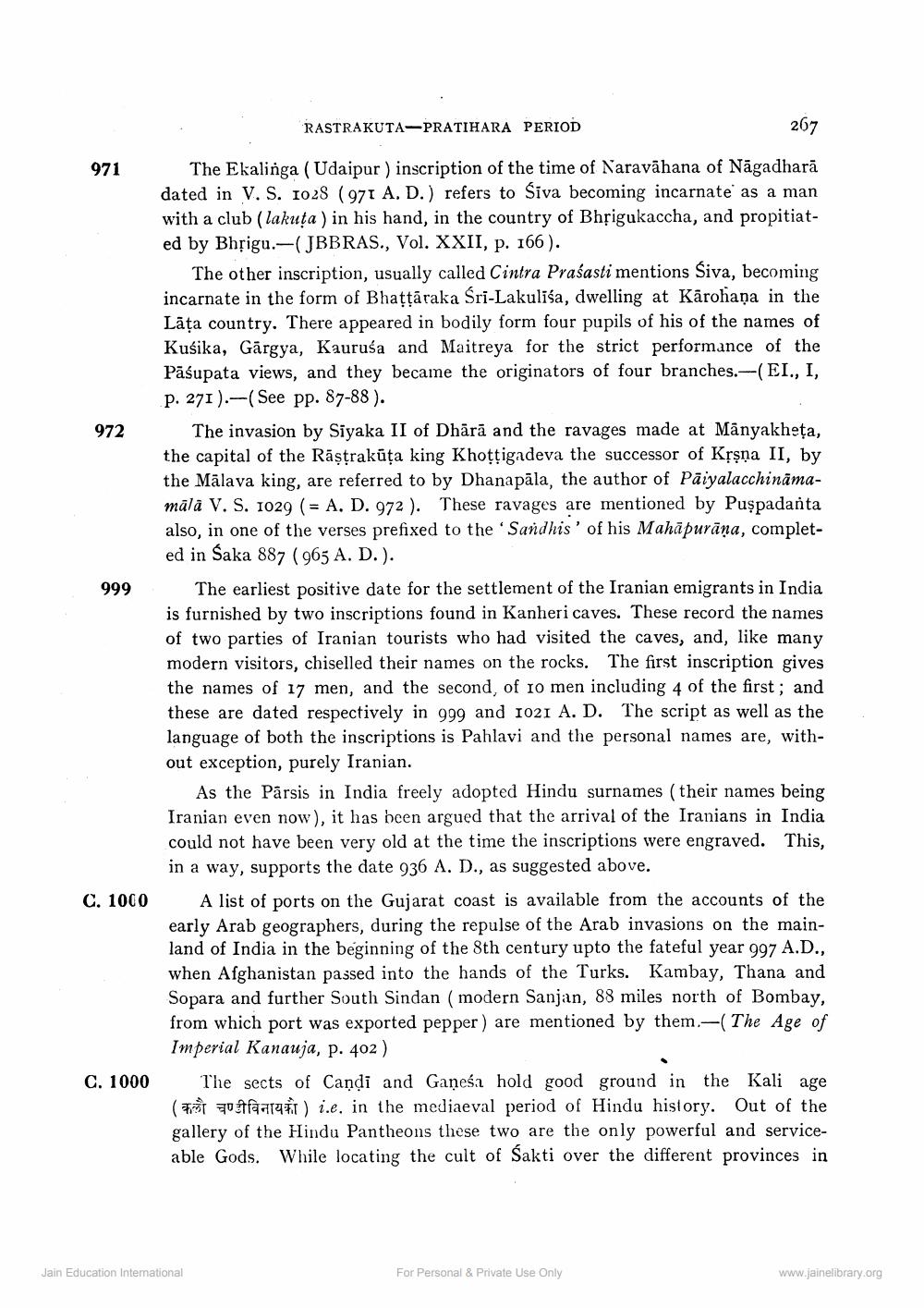________________
RASTRAKUTA-PRATIHARA PERIOD
267
971
972
999
The Ekalinga (Udaipur ) inscription of the time of Naravāhana of Nāgadharā dated in V. S. 1028 (971 A. D.) refers to Siva becoming incarnate' as a man with a club (lakuta ) in his hand, in the country of Bhřigukaccha, and propitiated by Bhřigu.-(JBBRAS., Vol. XXII, p. 166).
The other inscription, usually called Cintra Praśasti mentions Siva, becoming incarnate in the form of Bhattāraka Sri-Lakulīša, dwelling at Kārohaņa in the Lāța country. There appeared in bodily form four pupils of his of the names of Kuśika, Gārgya, Kaurusa and Maitreya for the strict performance of the Pāśupata views, and they became the originators of four branches.--(EI., I, p. 271):-( See pp. 87-88).
The invasion by Siyaka II of Dhārā and the ravages made at Mänyakheța, the capital of the Rāştrakūta king Khottigadeva the successor of Kșşņa II, by the Mālava king, are referred to by Dhanapāla, the author of Pāiyalacchināmamālā V. S. 1029 (= A. D. 972 ). These ravages are mentioned by Pușpadanta also, in one of the verses prefixed to the 'Sandhis' of his Mahāpurāna, completed in Saka 887 ( 965 A. D.).
The earliest positive date for the settlement of the Iranian emigrants in India is furnished by two inscriptions found in Kanheri caves. These record the names of two parties of Iranian tourists who had visited the caves, and, like many modern visitors, chiselled their names on the rocks. The first inscription gives the names of 17 men, and the second, of 10 men including 4 of the first; and these are dated respectively in 999 and 1021 A. D. The script as well as the language of both the inscriptions is Pahlavi and the personal names are, without exception, purely Iranian.
As the Parsis in India freely adopted Hindu surnames (their names being Iranian even now), it has been argued that the arrival of the Iranians in India could not have been very old at the time the inscriptions were engraved. This, in a way, supports the date 936 A. D., as suggested above.
A list of ports on the Gujarat coast is available from the accounts of the early Arab geographers, during the repulse of the Arab invasions on the mainland of India in the beginning of the 8th century upto the fateful year 997 A.D., when Afghanistan passed into the hands of the Turks. Kambay, Thana and Sopara and further South Sindan (modern Sanjan, 88 miles north of Bombay, from which port was exported pepper) are mentioned by them.-( The Age of Imperial Kanauja, p. 402)
The sects of Candi and Gaņeśa hold good ground in the Kali age ( offatt) ie, in the mediaeval period of Hindu history. Out of the gallery of the Hindu Pantheons these two are the only powerful and serviceable Gods. While locating the cult of Sakti over the different provinces in
C. 1000
C. 1000
Jain Education International
For Personal & Private Use Only
www.jainelibrary.org




